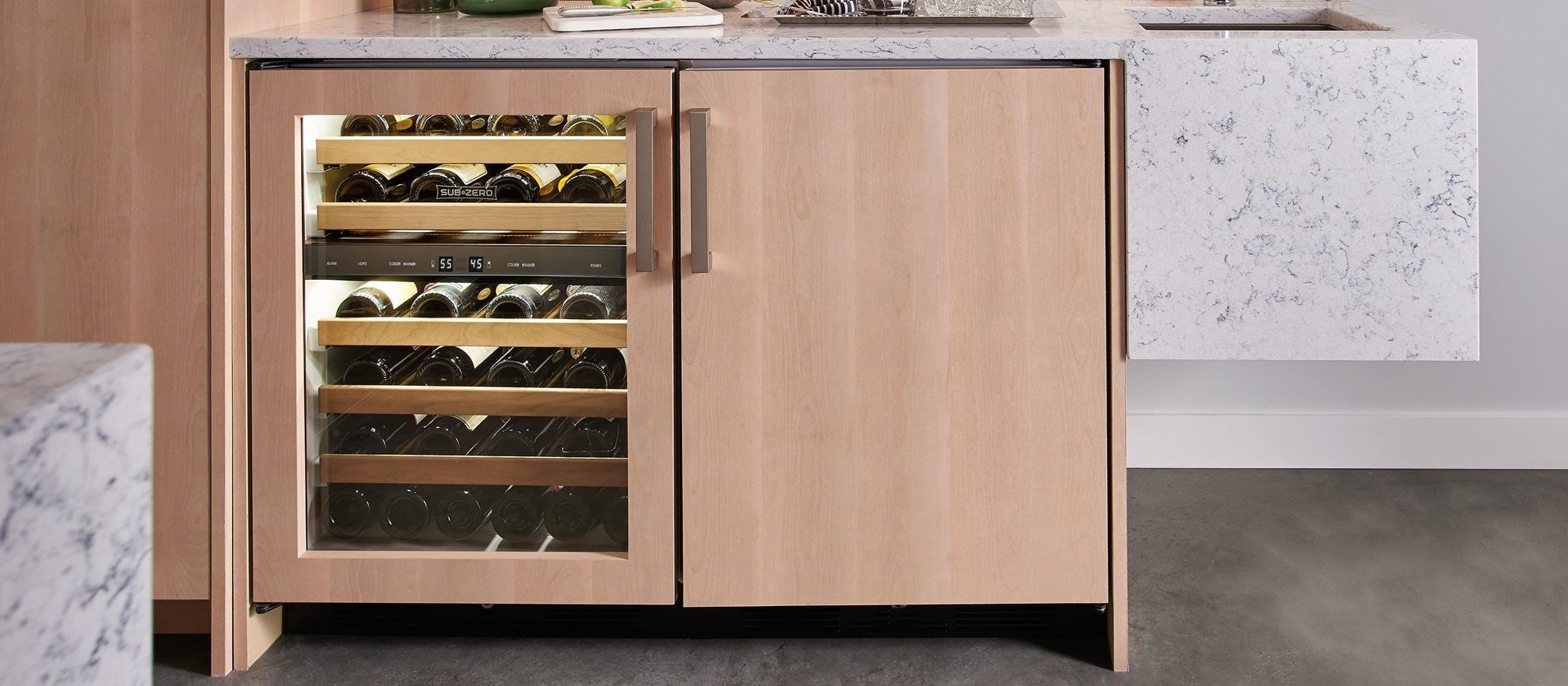
A wine fridge or wine cooler are the best way to store your bottles at the correct temperature. However, if you are not an experienced buyer, you will likely make mistakes that could affect the quality of your wine and how well you get on with your purchase.
This article will help you select the right product, which can be beneficial for the best output from an investment.
Inappropriate Sizing
The most common mistake we see people make is getting a wine fridge that is too small. My mistake here was trying to size a wine fridge, as you may think that you only need space for 12 bottles, but those racks fill up fast, and whatever cabinet/closet alternative you start to use on top will quickly look like this:
What To Consider: When considering how many bottles you will store in the present and future, buying a fridge that is too big rather than one that is too small is ok.
Ignoring the Temperature Control capabilities
Old favourite Wine Coolers with Warmness Control are Very Useful as well. These merchandise are suitable for storing your succulent wine bottles; however, these coolers do not come with adjustable temperature, so when you have a set that tastes first-class at one-of-a-kind temperatures, pick the tools that include this type of function. Some wines should be stored at room temperature (64-68°F). In general, red wines need to be hotter than white wines.
Pro Tip: Get a fridge with adjustable or dual-zone temperature controls to keep your reds and whites in the right conditions.
Overlooking Humidity Control
The humidity level is essential because the cork in a bottle of wine needs to stay moist to keep an airtight seal, which prevents the oxidation process that would turn your delicious bottle of red into vinegar. Dry air can cause corks to shrink and let in air, which ruins the wine. This results in the possibility of mold if it is too humid.
Why it matters: Choose a fridge that sustains the perfect moisture level (approximately 70%) or permits you to adjust your humidity.
Ignoring Placement and Ventilation
The location of your wine fridge. If your current fridge fits into a cabinet, know that part of the point behind some refrigerators needing air space in the back is for ventilation.
Pro Tip: Before purchasing, determine if the space suggests a freestanding wine cooler or a built-in fridge. Check the manufacturer’s ventilation requirements.
Skimping on UV Protection
For example, wine is light-stricken and should be kept out of direct light (especially the sun). A glass refrigerator door with no protective means from UV rays may end up spoiling the taste and quality of your wine.
Tip: If you are using light to mount, look for fridges with glass doors made of UV-protected glass so that light does not spoil the wine.
Ignoring Noise Level
A few wine fridges may be noisy, especially in quiet rooms such as the dining room or workplaces so always be careful to shop wine fridges online
Pro-tip: Where noise is a worry, good refrigerators will have plenty of reviews that rate how quiet they are.
Bypassing the Energy Efficiency Test
A poorly performing model could lead to a higher monthly electric bill, since a wine fridge is on 24 hours per day.
tip: Choose an energy-saving model, as this will make you save in the long term.
Final Thoughts
Purchasing a wine fridge is more than just swiping the first good-looking one you find — it’s about locating a unit that fits your collection, home, and routine. Now that you know what not to do, help prevent your wine from spoiling with proper storage.
And since the wine fridge you choose will ensure every bottle is stored in ideal conditions, they will be ready for you to open and enjoy.

